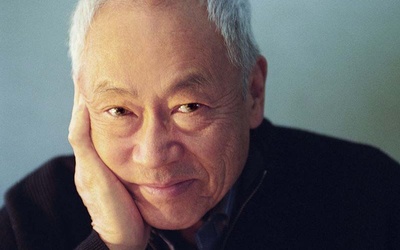
Alexandra Lange
Alexandra Lange is the architecture critic for Curbed. Her essays, reviews, and profiles have appeared in Architect, Domus, Dwell, Medium, MAS Context, Metropolis, New York Magazine, the New Yorker, and the New York Times. She has taught design criticism at the School of Visual Arts and New York University. She was a 2014 Loeb Fellow at the Harvard Graduate School of Design. She is the author of Writing About Architecture: Mastering the Language of Buildings and Cities (Princeton Architectural Press, 2012).
Updated June 2017
Stories from This Author
The Forgotten History of Japanese American designers' World War II internment - Revisiting the link between detention and design history, 75 years after FDR's executive order - Part 3
Aug. 11, 2017 • Alexandra Lange
Read Part 2 >> Textile artist Kay Sekimachi and her mother and sister were taken by bus to Tanforan Assembly Center. In an oral history at the Archives of American Art, she recalls, And then, we were assigned rooms in a barrack, and there were cots and we had straw mattresses, and it was just bare other than the cot. And somehow, we managed for—I think it was about three months that we were in Tanforan. But I must say, …
The Forgotten History of Japanese American designers' World War II internment - Revisiting the link between detention and design history, 75 years after FDR's executive order - Part 2
Aug. 10, 2017 • Alexandra Lange
Read Part 1 >> As the introductory text to “Self-Interned, 1942: Noguchi in Poston War Relocation Center” is careful to note, Noguchi’s wartime experience was unusual. Like Yamasaki, he was officially living in New York City when Roosevelt signed the executive order, though he had been working on the West Coast. After Pearl Harbor, he had joined the group Nisei Writers and Artists Mobilization for Democracy, trying to prevent incarceration; when that effort proved futile, he decided the best way …
The Forgotten History of Japanese American designers' World War II internment - Revisiting the link between detention and design history, 75 years after FDR's executive order - Part 1
Aug. 9, 2017 • Alexandra Lange
On January 18, 1963, architect Minoru Yamasaki appeared on the cover of TIME magazine, his disembodied head floating amidst the neo-Gothic tracery, delicate tenting, and flower-shaped fountains of his own design. The occasion was Yamasaki’s commission to plan the then-$270-million World Trade Center. The commission was made controversial, in the words of the TIME feature, by the contrast between the “dreadful flaws” critics found in the work of the “wiry, 132-lb. Nisei,” and the pleasure his work gave to the public …




